I’ve been taking photos in and around water for as along as I’ve been a photographer. There is something magical about water; the movement, the sound, the reflections. Being in and around water feeds something basic in my soul. Because of this, it’s only natural that water would make it into my toy photography. Some of my favorite toy images have been taken in water.
While water is beautiful to photograph, it’s not easy to work with. It can be unpredictable; water can steal your LEGO and it can leave you soaking wet. But even with these hazards, the final results are often worth it.
I prefer to photograph in the great out doors so when I talk about water I’m referring to rivers, lakes, puddles as well as the Puget Sound. I have found that the edges around any body of water is usually rocky, muddy, sandy or all three. Not exactly an environment that invites getting down on your knees or stomach for your typical toy photos. Over the years I’ve learned a few tricks about working in and around water plus a few tips to make my life easier.
Tips For Water Photography
1) Lego doesn’t float consistently or at all. If it does float, it will only move away from you as you’re taking photos. I photograph in shallow water like a puddle or build up a base for my subject to rest on. This can be nearby rocks, a bit of wood, a LEGO base plate (although you will have to weight this down) or a water glass. Whatever method you choose make sure you can disguise the object or remove any shadows with Photoshop.

I Will Be a Fisherman (These figures are positioned on a lego plate and then inserted into the water. I used loose gravel to cover the plate because even though the water was moving, you could still see the edges.)
2) If you’re looking for great reflections you will want to get low to the ground and aim across the water. Once you get at this level you can see that the surface of the water acts as a mirror. You can see the reflection and compose for the reflection rather than the subject.
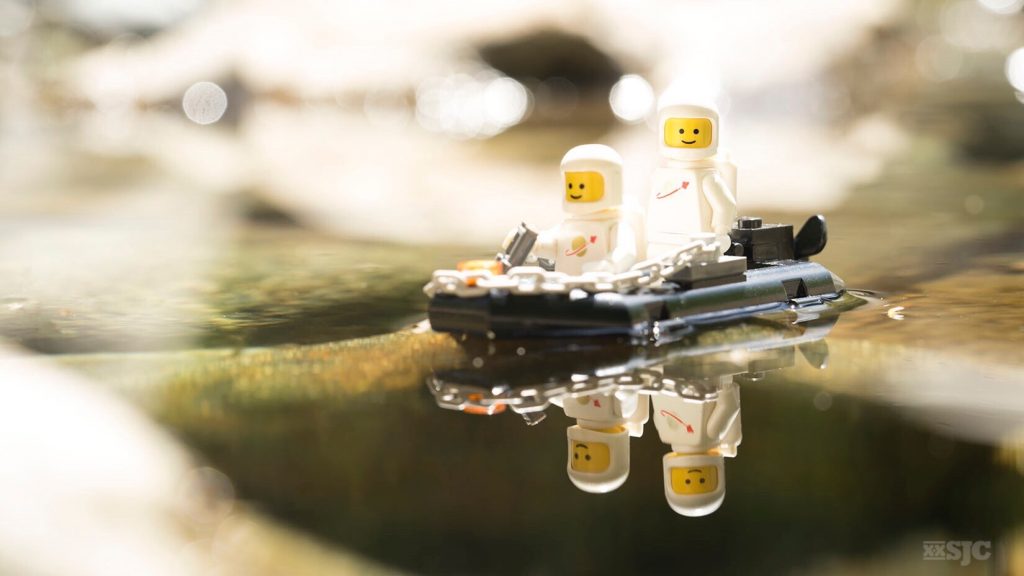
I love how the dark shadows really let that reflection pop! The rocks around me where bright white and acted as a natural reflector.
3) Safety first! I have found that water can be unpredictable and a roque wave or a fast moving stream can soon send your figure on an unexpected adventure. Be careful; you don’t want to leave any friends behind! You will want to be aware if tides are going in or out. Its also good to be aware of how big the waves are and to keep a watchful eye on your figures. A rogue wave can easily whisk your subject out to sea! I will often watch the water for a few minutes to get the feel of the wave action before I put my figures in place.
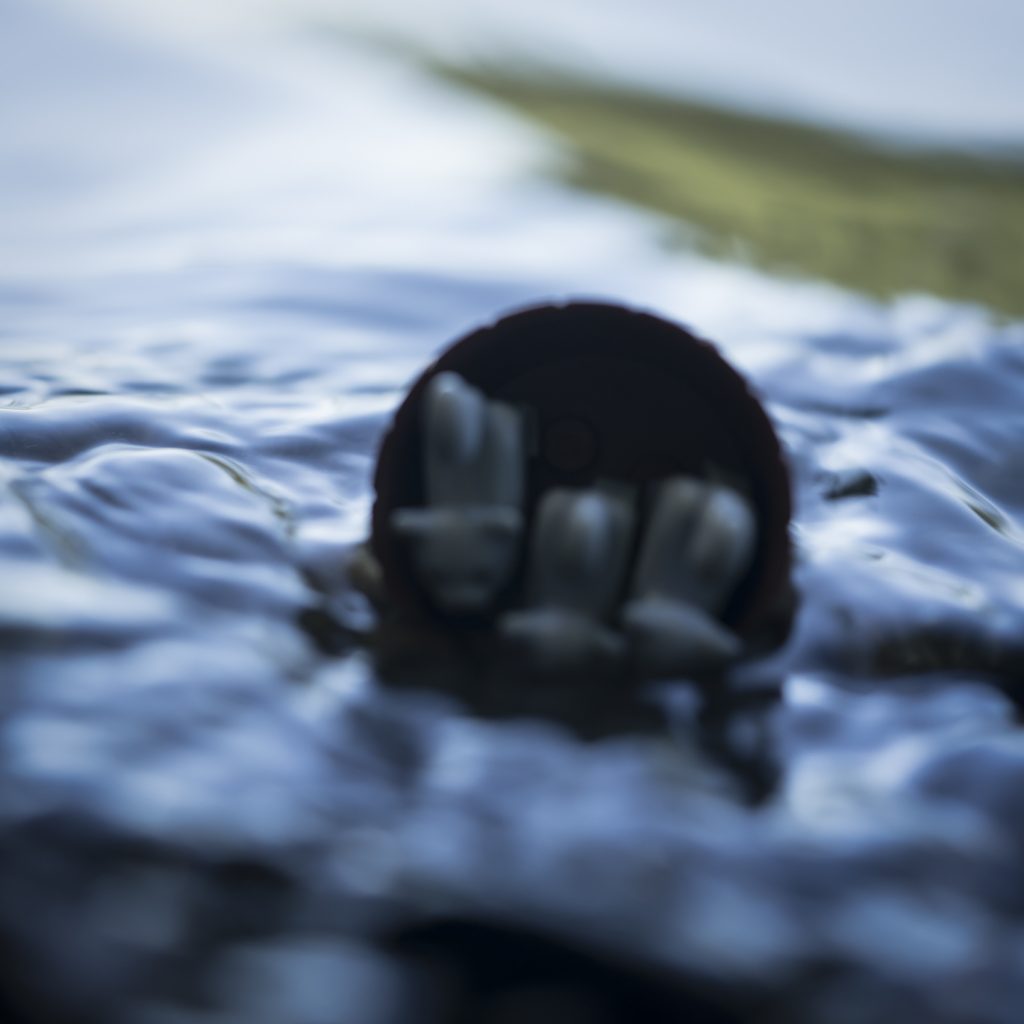
Man down! Or is that cats down??
4) Water is very reflective and can cast deep shadows so you will need to have a reflector or portable light on hand. By illuminating the shadows you can eliminate hours of post production manipulation. If you’re working in the bright sun, be careful of unwanted hot spots on your figure. Sometimes its easier to move to the shade or wait for better light, than risk an image where the highlights are blown out.
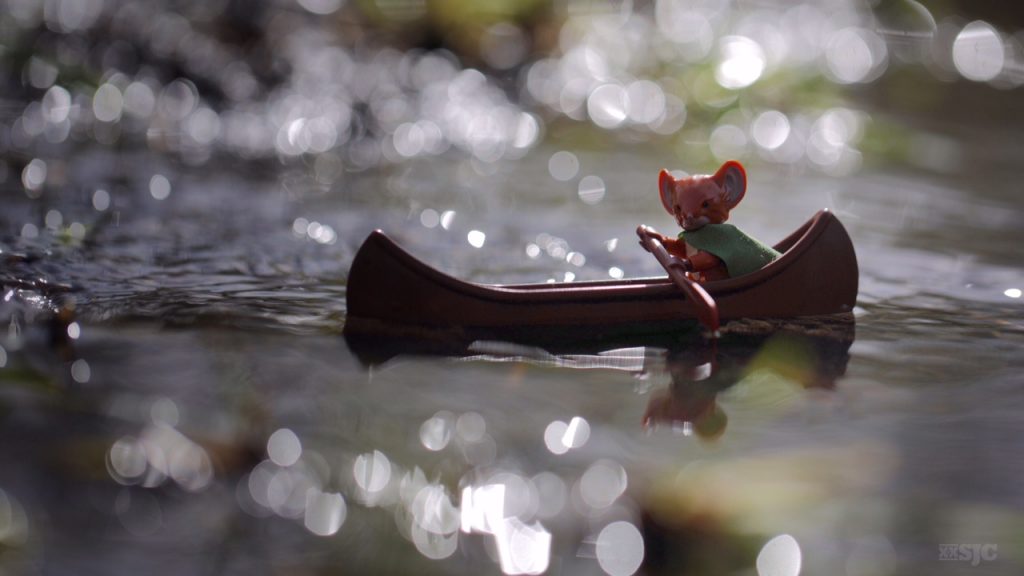
This was taken at Magnuson Park while I was kneeling in the mud near the beaver damn. If only I had known about reflectors when I took this photo! Then maybe we could see the figure better. 🙁
5) Where the right clothing and have protective gear along. The ground is hard and unforgiving. Once I was laying on rocks for so long to get the perfect photo that my entire side was dappled with bruises. So take it from me, bring knee pads, a small foam pad or a jacket you can kneel on. I also wear water proof shoes. You never know when you will be in the water rather than next to the water.
6) Not all water is moving. Sometime the water will be still and create perfect reflection but you want to create the illusion of movement. If this is the case, use a small twig or rock to break the surface of the water and simulate movement.
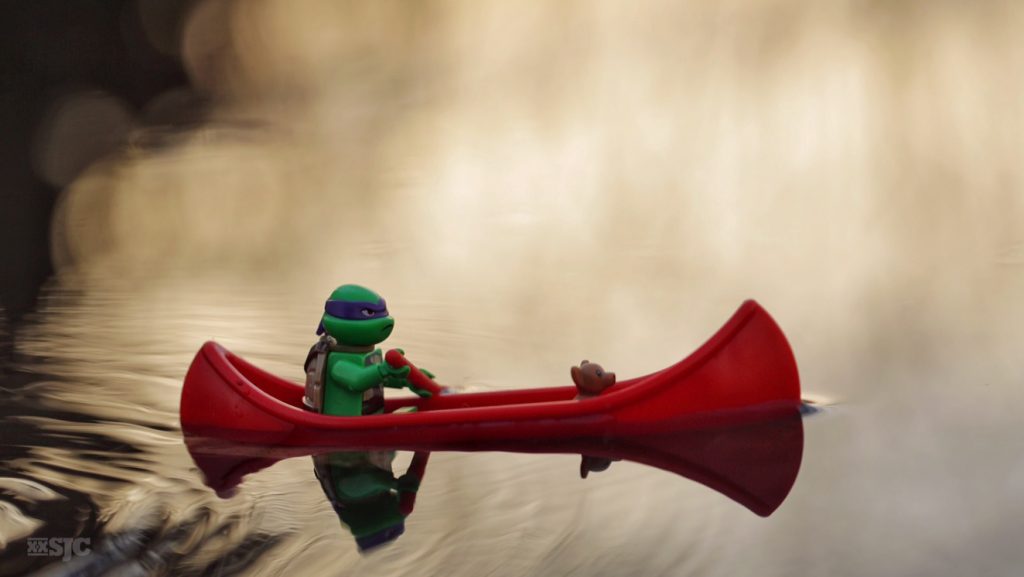
(On this photo I used a twig to get the water moving. If you’re asking your viewer to suspend their disbelief, you need to show your vehicle ‘moving’.)
7) Don’t be afraid of winter water photos. Photographing in the winter can create some unexpected bonuses. While water freezes in the cold, so does mud. This makes it much easier to kneel on the ground. If you encounter a frozen pond in the sun, it will add extra sparkle to your photo. I’ve created some of my favorite photos in temperatures that are near or below freezing.
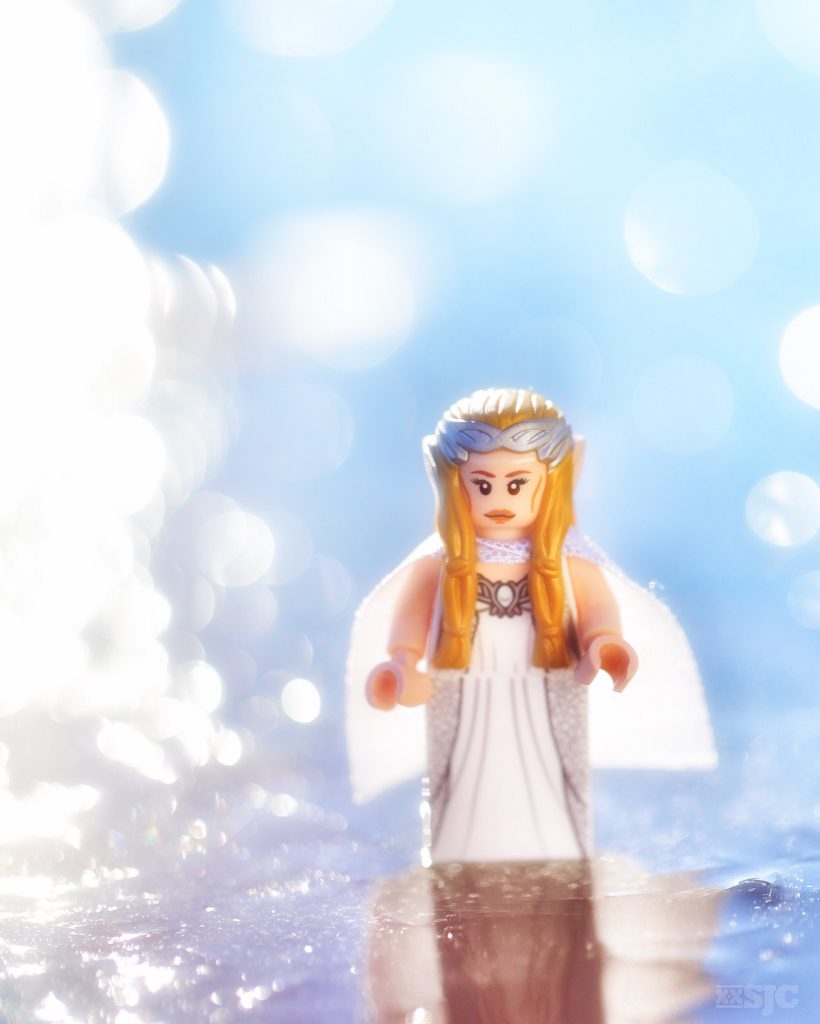
Galadriel (Bokeh on a frozen pond can create a magical effect!)
8) It’s not always convenient to travel to the woods or a nearby park for water photos. You can create a manmade pool with a shallow dish and have a little pond ready to go at any time. The biggest draw back of this trick is that you will have to resolve the edges by masking. This way you can create the illusion of an outdoor pond. Extra added bonus: let your ‘pond’ freeze in the winter. You can create an instant ice rink, have figures frozen in ice and boats don’t sink!
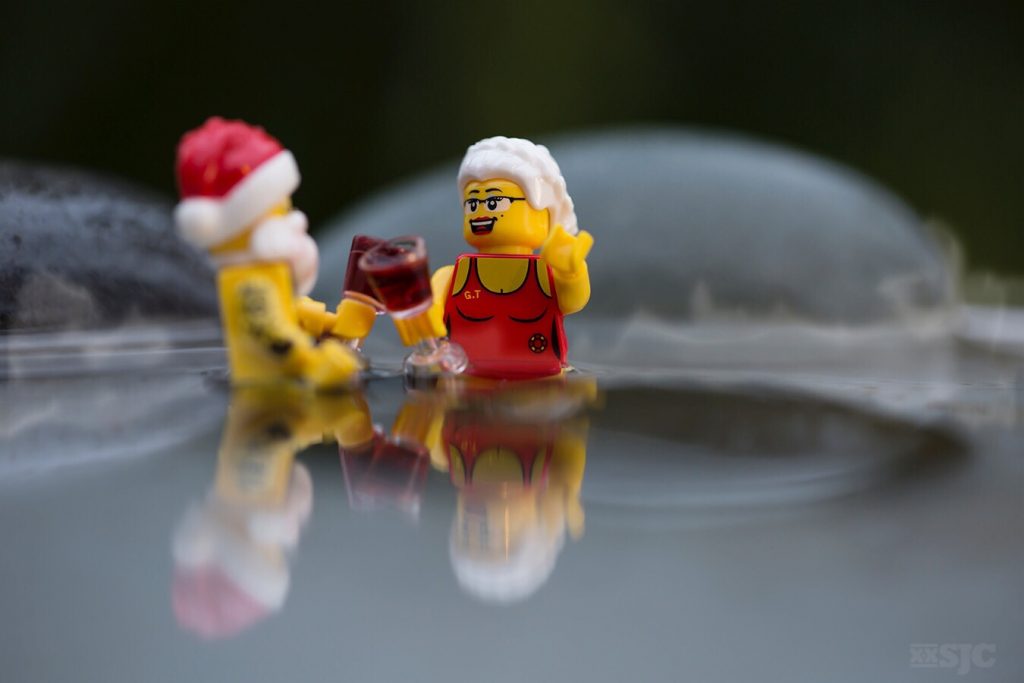
Celebrating a job well done! (I used a small shallow pan to create this winter hot spot. The rocks are added to disguise the hard edge of the pan.)
9) Experiment with camera angles, and shutter speed. Your camera angle will determine what kind of reflection you can capture. Also by slowing down your shutter speed you can capture beautiful effects. If you have image stabilization on your camera you can drop below 1/60th to arounds 1/30th and capture the movement of the water. Experiment and see how slow you can go and still keep your figures in focus.
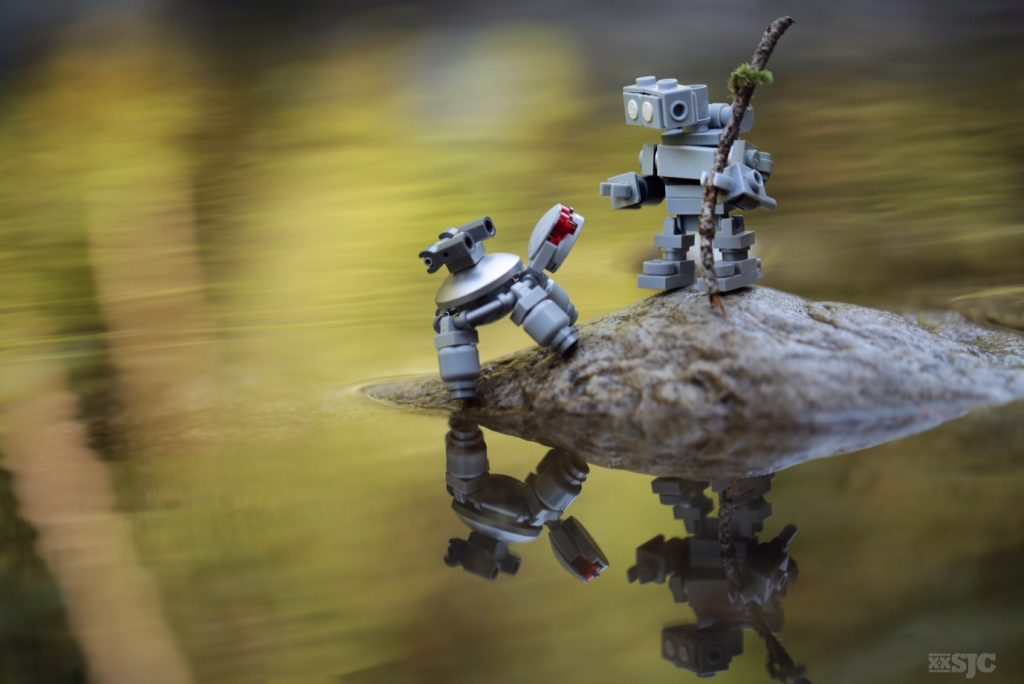
(A shutter speed of 1/30th or lower can produce some lovely effects showing water in motion.)
10) Photographing in and around water can be very rewarding. I encourage you to give it a try and have some fun with your toys!
Shelly
Do you have any tips you would like to share about working in and around water?
And if you’ve made it this far I encourage you to sign up for our weekly email round-up. Or join our G+ Community were we hold monthly contests with prizes for the winner!


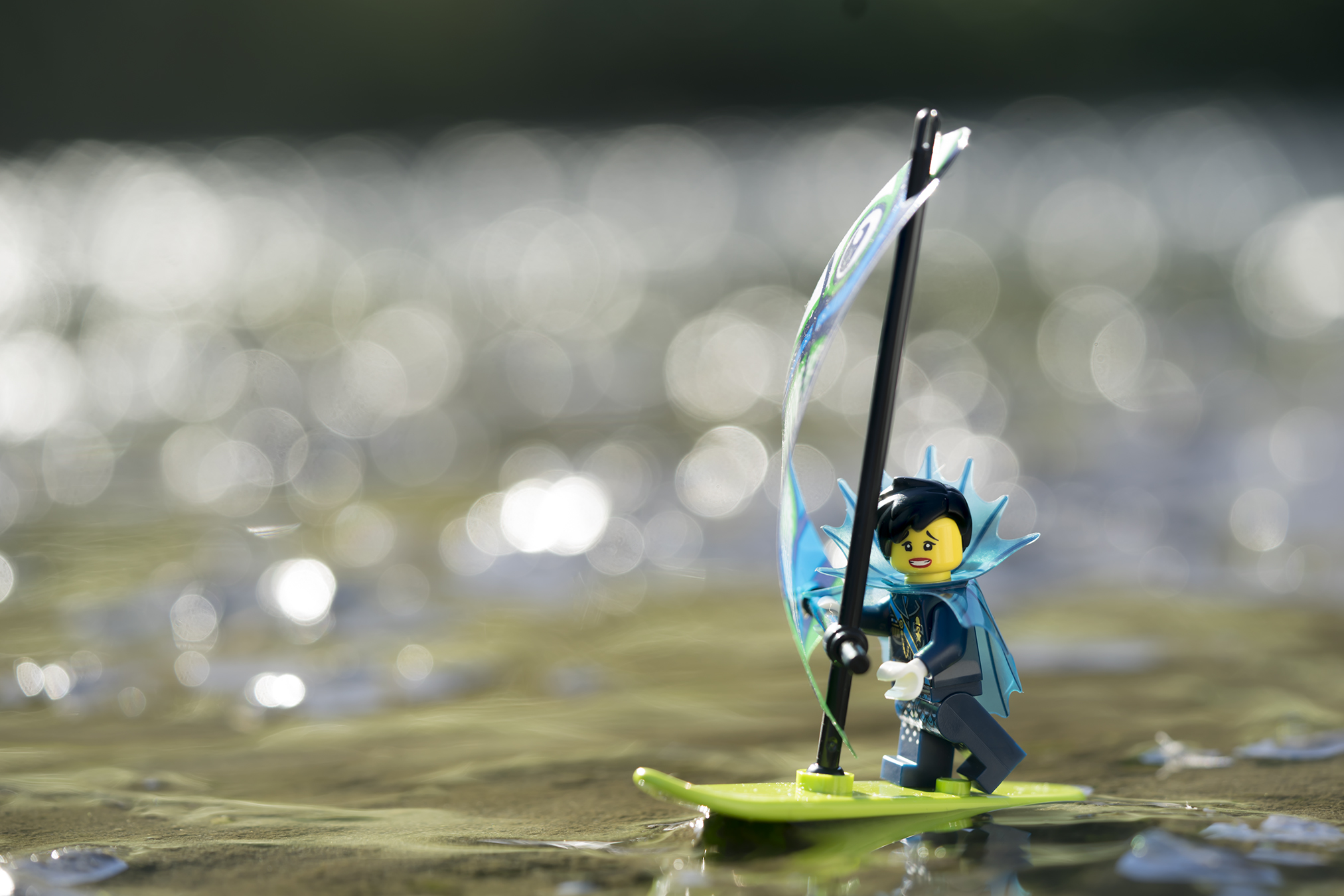
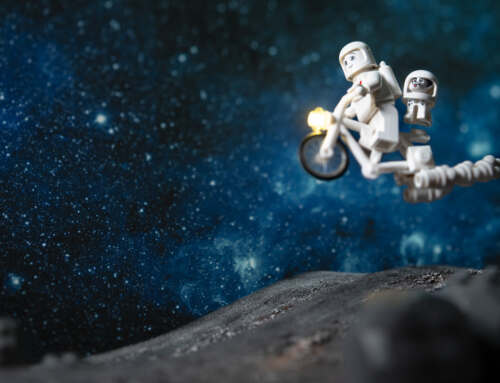
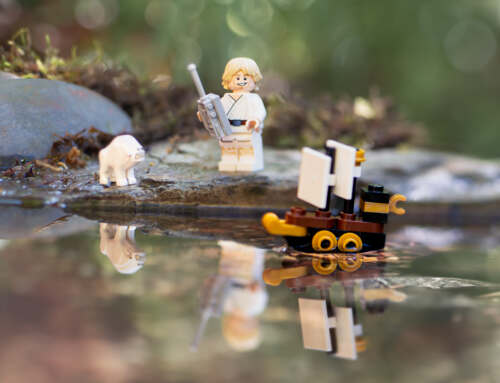
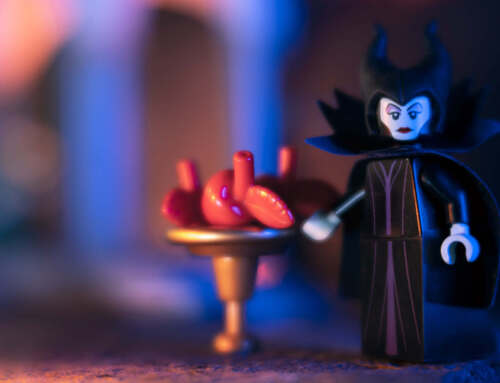
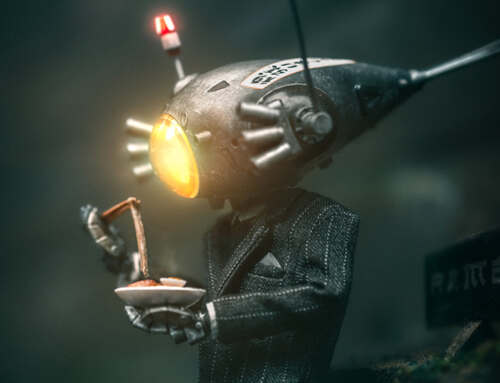
Hi Shelly! I loved this piece and each of the photos included. I’ve had the chance to shoot along with you in/at the water, so you already know I love the magic of it, too. Thanks for sharing the fun and some tips. Your water pics are stunning!
There’s a cemetery behind our home which has some amazing water features. I love playing with times of day there, too. Winter is coming…
Doug, yes we did share a magical moment around water at the Albany Bulb! I have two awesome pictures to remind me!
I’m glad you have access to a nearby water feature. I look forward to seeing what you can create there or at this home when winter finally arrives.
Cheers and thanks for the comment!
I really enjoyed your post, Shelly! It’s evident that you are on good terms with hydrosphere :))) and can get the most out of water in your photography! Thank you for sharing your wonderful experience and beautiful shots, this is a very useful post. 🙂
Enjoy your weekends!
Kind Regards,
Ann.
Thanks Ann! I’m glad you enjoyed my post and images. I wonder want you could create in your studio with some frozen water?? Happy week to you!!
Very nice write up Shelly – I enjoy all your images in the examples. Lots of great tips and tricks I plan to use.??
Thanks Joe, I’m glad you found it to be useful! If you come up with your own tips for working with water I hope you will share them with us too! ??
Love this! I’m surprised you hadn’t posted a Water Basics article sooner than this as it’s such a huge part of what you do! 🙂 I love all your water images, they’re so magical! I’ll have to experiment with Tip #9 and see if I can get that painterly effect with shutter speed. Super inspiring.
Leila, Thanks for your kind comments. I think I can tell you exactly why I haven’t shared this before – I was selfish. I’ve worked hard to capture the images that I’ve created in the past and I didn’t want to see a bunch of copy cats in the world of social media. But Ive realized that that is a stupid attitude. Im here to help and share my knowledge – so why not start with what Im good at.
I hope you have fun with number 9. You will need a good in camera stabilization once you drop below 1/60 of second. I try to put myself in the classic human tripod stance. But you can also get a soft bag to place on the ground (sort of like a bag of rice) to act as a stable platform for your camera. I love to capture the swirling water, I find it to be patly and a beautiful effect.
I look forward to seeing what you come up with!
Gorgeous images and some great tips! Thanks for this Shelly.
Thank you Jennifer. Much appreciated my friend. 😀
Is there a way to recreate the effect of reflection off the water inside the home if there are no bodies of water readily available? I have a really beautiful shot planned but of course i dont want to sacrifice the figure to a medium that is better reflctive.
Hey Chris have you tried a mirror/glass? If you don’t want to work with water try a mirror / glass (blue paper underneath maybe?) with plastic wrap over the top to simulate the surface. Or you can use a piece of shower glass. I would use a short depth of field to create a blur to enhance the effect. You can also use a large pan, cookie sheet, oil pan etc to create a body of water. You would need to get clever about the edges though. Rock and moss can help to create a faux outdoors look. Let me know if you found this to be helpful. 🙂